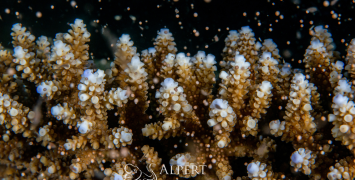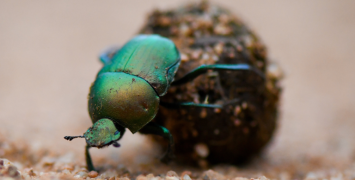If Darwin could have scuba dived...
If Darwin could have scuba dived, he would have enjoyed the East African lakes: Victoria, Malawi and Tanganyika. Here live the cichlids – a colourful fish which has evolved rapidly into thousands of species, emulating and surpassing Darwin's finches in the Galapagos. Prof. Walter Salzburger, an Austrian researcher, is using his ERC grants to study the diversity of cichlids from ecological, morphological and genetic viewpoints. He believes these unique fish provide an ideal model system to understand the "how" and the "why" in questions of evolutionary biology: questions that relate to all life on earth.

Based at the University of Basel in Switzerland, Salzburger has been working on cichlid evolution for over 15 years. "In times like these, with a lot of discussion about species going extinct due to humans, it is crucial that we understand the origins of biodiversity and its role in a balanced ecosystem."
"Our research investigates why the cichlids have evolved so rapidly, studying their habitats and food sources to find out why new traits, such as flexible jaws, are useful. But we also study how these traits develop at the genetic level and identify molecular mechanisms that affect the rate and patterns of adaptation."
Prof. Salzburger received an ERC Starting grant in 2007 in the first ever ERC call, which is now in its final stages. With his second Consolidator grant due to start this year, he will build on his results and offer a much larger-scale analysis of the molecular mechanisms and ecology underlying cichlid evolution. But before any lab work can begin on such projects, the scientists have to go fishing.
Teach a scientist to fish
During fieldwork at Lake Tanganyika, the team are based at a small lake-side research station on the border between Zambia and Tanzania. They work a lot with local fisherman in the area, who provide the expertise for difficult catches. According to Salzburger, children from the nearby villages also have fun helping the researchers catch fish in the shallows, "but they think we are crazy for keeping the least tasty parts of the fish."
After several years of catching cichlids, Salzburger has established good techniques: "We go scuba diving to find samples and chase fish into our underwater nets, as well as using spear guns for bigger specimens. We even try angling, digging for worms on the shore beforehand," Salzburger says. "But there are some species we just can't catch! And that's where the local experts come in - to prove they are the real fishermen of Lake Tanganyika."
Back in the lab, the team uses DNA sampling of fin tissue and bones with 3D measurements to record physical traits. Habitat surveys, analyses of stomach contents and stable isotope tests are then used to quantify where the fish live, as well as their position in the food chain.
Thick lips, big jaws and spotty fins
"Cichlids are incredible to any evolutionary biologist. Not only as a textbook example of adaptive radiation – the fast evolution of numerous new species – but also as an example of convergent evolution, where different species independently develop the same trait," Salzburger explains.
This was the case with all three of the fast-changing traits studied in Salzburger's first project. Several independent species, often from different lakes, developed the same jaw shape and dentition, thick lips or "egg-dummy" colouration on their tail fins. In the case of the "egg-dummy" pattern, which encourages potential mates, two species evolved the same pattern on different fins.
This repetitive evolution allowed the researchers to make comparisons between the different species, assessing the genetic paths taken by each newly-developed species and the similar 'ecological niches' they fit into. (Listen to Salzburger's podcast on cichlid evolution.)
From fossils to the present: a whole aquarium
Salzburger's next project will extend this analysis to an entire population of cichlids – over 200 species - in Lake Tanganyika. They will also study rock-hard evidence of cichlid evolution, analysing a fossil record uncovered by geologists in drilling cores. This could reveal extinct species and give a real-time idea of how new species developed.
"Lake Tanganyika is an ideal setting for a snapshot on evolution," comments Salzburger. "It is a giant aquarium, within which one species has become two hundred species. With divergence occurring on timescales as short as thousands of years, and a newly uncovered fossil record, Tanganyika offers the perfect opportunity to witness evolution in action."
On 14 February, Prof. Salzburger will talk at the AAAS Annual Meeting in Chicago. As part of the ERC workshop, he will advise early-career scientists on research prospects in Europe.
Ahead of his talk at AAAS, Salzburger said: "ERC grants allow you to establish your own line of research in a very independent way. Usually running for five years, they are seen as a gold standard of excellence by European universities and will give you the freedom to concentrate on your actual research, without many other obligations." (Listen to Salzburger's podcast on ERC grants.)
Between scuba diving, digging for worms and writing scientific papers, Prof. Salzburger shows how researchers can adapt to any environment in order to achieve ground-breaking science.






